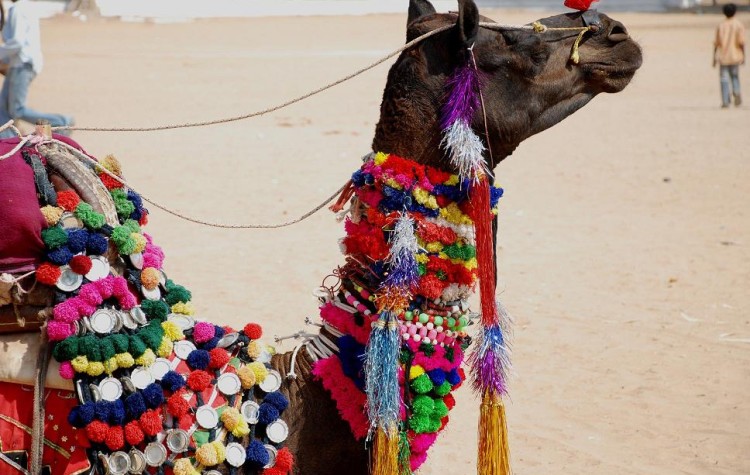The Nehru Boat Race, as the name suggests, is named after Pandit Jawahar Lal Nehru, the first Prime minister of independent India. In 1952, when he visited Kerala , Pandit Nehru was escorted by a pageantry of snake boats, called Chundan Vallams, on a boat trip from Kottayam to Alappuzha. The first snake boat race was an impromptu one conducted in Pandit Nehru’s honour on the Punnamada Lake near Alappuzha. Impressed with the thrilling boat race and the warm reception, he received, Pandit Nehru announced a silver rolling trophy, the replica of a snake boat, which later came to be known as the Nehru Trophy. Celebrated each year on the second Saturday of August, this fun filled water sport is witnessed by an estimated gathering of about two lakh people from India and abroad.
Fiercely fought , the race stretches to a length of about 1370 meters and is divided into various tracks or channels. The boats moving through these channels appear like fast moving snakes, hence the name “The Snake Boat Race”. Made of wood, locally called “Anjili Thadi”, the boats measure about 100 feet with a raised prow and have the capacity to accommodate around 100 rowers, 4 helmsmen and 25 cheerleaders. Richly decorated with colourful trimmings and beaded umbrellas, the ebony coloured boats are a visual delight as they move through the placid backwaters of Kerala.
Competition being tough the preparation for the big event starts well in advance. The best oarsmen are selected for the race and under the expert guidance of the senior oarsmen rigorous practice begins. Synchronized rowing requires long hours of dedicated and arduous training. Steering through the lake needs knowledge of water currents, determination, stamina and expertise, acquired over the years, in different aspects of boat racing.
The boats line up at starting point, in all their colourful splendour, and wait for the race to begin. As the crowds wait expectantly, the thrill and excitement soars to a crescendo.
 Amidst the deafening roar of the crowd, cheering the boatmen, and the loud beating of the drums, the race begins. The oarsmen row in unison to the rhythmic sound of the drum beats and as their oars splash they create ripples not only in the calm and tranquil waters of the lake but also in the hearts of the crowd who come in hordes to add to the excitement of event.The sea of people gathered here contributing equally to the fun and enthusiasm that is so characteristic of this much awaited event.
Amidst the deafening roar of the crowd, cheering the boatmen, and the loud beating of the drums, the race begins. The oarsmen row in unison to the rhythmic sound of the drum beats and as their oars splash they create ripples not only in the calm and tranquil waters of the lake but also in the hearts of the crowd who come in hordes to add to the excitement of event.The sea of people gathered here contributing equally to the fun and enthusiasm that is so characteristic of this much awaited event.
The floats and the colourful water processions, that follow the racing boats, depict glimpses of the rich cultural heritage of Kerala. The folk dance performances and songs, aimed at inspiring the boatmen to row in speed and harmony, all add to charm and uniqueness of this thrilling boat race.
Sponsored by different villages, the competition is tough and a matter of great pride for the participating villages. A victory at this race, by a village boat, is talked about and celebrated for months to come.
A remarkable festival, the Nehru Boat Race is marked by the team spirit and sportsmanship that is so essential for a sport like this. The competition is tough but as they say when the going gets tough, the tough get going. This is visible in the energy and drive we witness as the oarsmen put all that they have in competing with each other and rowing with speed towards the finishing line.






